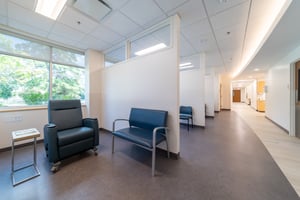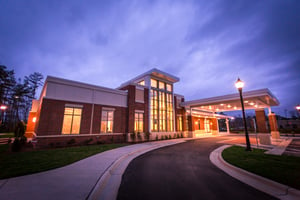Advances in interventional pain medicine have revolutionized the ability to manage and alleviate...
Firmness, Commodity, and Delight: A Bridge Between Architecture and Medicine
The ancient Roman architect and military engineer Vitruvius, in his treatise De architectura, introduced three essential qualities for a successful building: firmitas, utilitas, and venustas, or translated to English: firmness, commodity, and delight. While these terms originated in the realm of architecture, their underlying principles may have some application in the field of medicine. This post seeks to explore that overlap in the context of design and construction of medical facilities.
Firmness: The Foundation of Structure and Treatment
In architecture, firmness refers to the structural integrity and durability of a building. It ensures the building can withstand the elements over time and provide a safe environment for its occupants. In medicine, firmness may translate to the strength and reliability of a diagnosis or treatment plan. A strong diagnosis is based on solid evidence and leads to effective treatment options. Similarly, a firm treatment plan is supported by research and proven to be effective in addressing a patient's condition with the intention of enhancing that patients life over time.

Commodity: Function and Utility
Commodity in architecture signifies the functionality of a building, how well it serves its purpose. A building should be designed to meet the needs of its occupants efficiently and effectively. In medicine, commodity may relate to the practicality and ease of a treatment or medical intervention. A treatment should be accessible, affordable, and minimally disruptive to a patient's life. It should be able to be delivered efficiently with consistent efficacy. Both architecture and medicine seek to create solutions that are functional and accessible.


Delight: Aesthetics and Well-being
Delight in architecture encompasses the aesthetic appeal of a building, its ability to inspire and affect the occupant. A well designed space enhances the human experience. In medicine, while not as explicit, the concept of delight can be linked to patient satisfaction and well-being. A successful medical experience goes beyond effective treatment; it also involves addressing the patient's emotional and psychological needs. Creating a positive and supportive environment contributes to a better overall outcome.
The Overlap Between Disciplines
While architecture and medicine may seem disparate, they share a common goal: to create solutions that enhance human life. Both fields prioritize functionality, durability, and wellbeing. The overlap between firmness, commodity, and delight demonstrates the interconnectedness of these principles across different disciplines. By understanding these shared concepts, architects and medical professionals can gain valuable insights into their respective fields and potentially foster collaboration and innovation. Ultimately, the pursuit of excellence in both architecture and medicine involves a delicate balance of these three essential qualities. By understanding their interconnectedness, we can strive to create buildings and healthcare systems that are not only functional, but inspiring and transformational.



